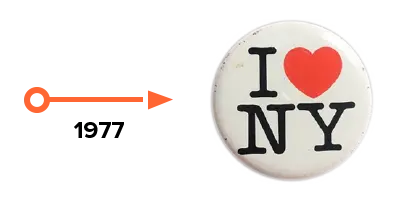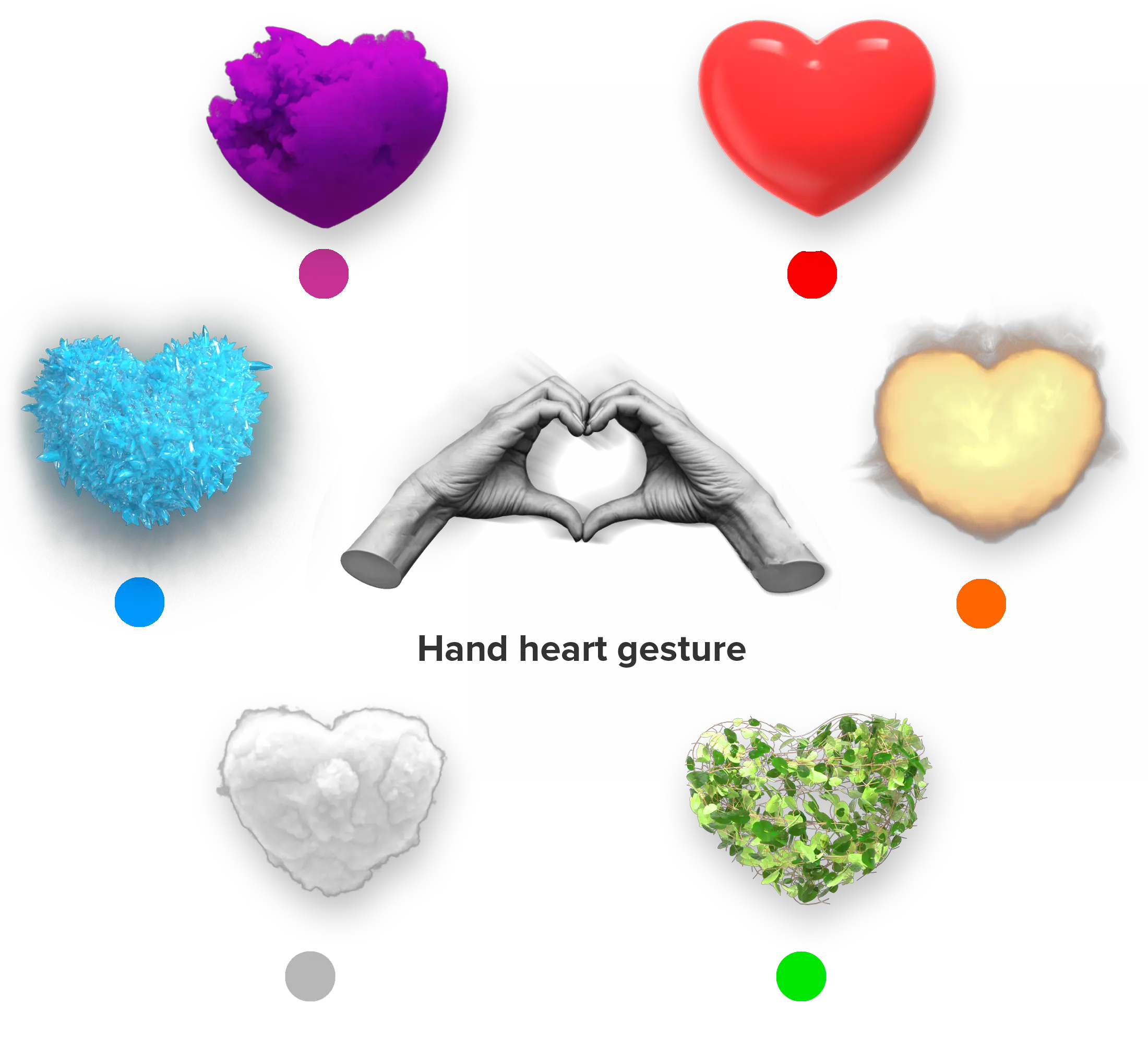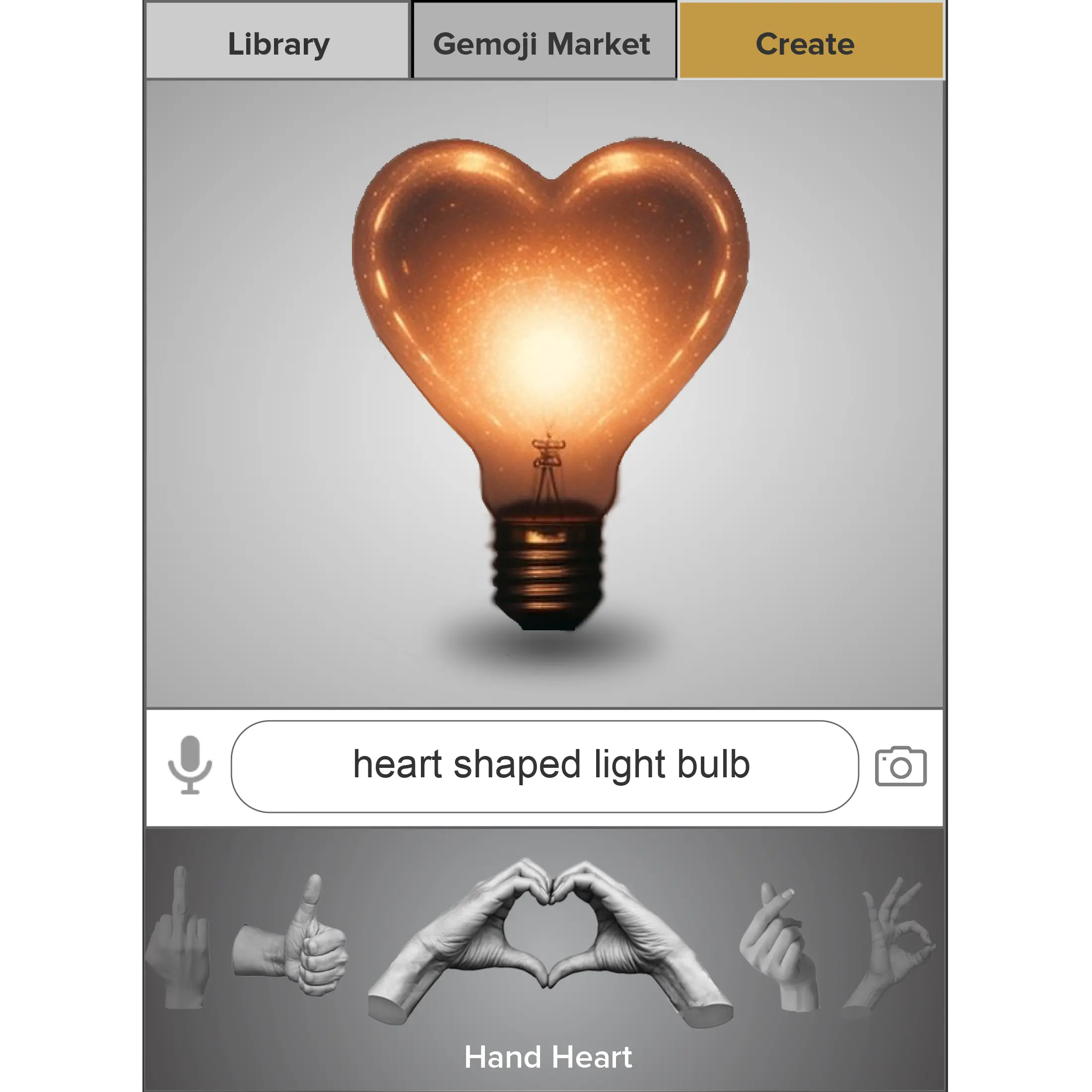
What is gemoji?
A picture is worth a thousand words, and gemojis are words that dance, emotions in motion, drawn in air and felt on screen. Summoned by a simple gesture, gemojis brings conversations to life with expressions that say more than words ever could. Unlike static emojis, It reacts, it changes and most importantly it resonates. In today’s social media landscape, where real time interactions increasingly shape how we connect, using gemojis makes your message feels powerful, memorable and personal.
Emojis to gemojis
The word “Emoji” blends the English word “Emotion” with the Japanese word “Ji” for “Word”, capturing the essence of our ubiquitous modern pictorial system. This system while contemporary, nonetheless draws from a lineage that transcends both time and culture. Ancient Greek Cyrene coins 2500 years ago featured a heart symbol to convey values like loyalty and love.


By the 1500s, French card games were evolving rapidly and becoming a popular pastime. No longer tied to commerce, the symbol of heart became about the exchange of wit and entertainment. It evolved into a symbolic commodity of social interaction, something you didn’t spend, but shared.
Centuries later, in an effort to share the message of nyc renewal, Milton Glaser’s iconic I LOVE NY (1977) transformed the heart symbol into a highly circulated pop culture motif. The early internet, via messengers and chatrooms, gave birth to makeshift emoticons like <3, which then in 1999, evolved into Shigetaka Kurita’s first set of emoji. A dedicated Pixel-based, expressive symbols library for Japan’s mobile web.


Kurita’s pioneering emoji designs reflect a deeper cultural affinity in seeking elegance of expression rooted in the Japanese writing system. Japanese blends kanji, Chinese originated pictographic characters, with the native alphabetic scripts hiragana and katakana. This hybrid linguistic structure parallels not only Milton Glaser's design but also today's use of emojis with English text to compose messages rich in context and efficiency.
The evolution of emojis also points to the growing institutionalization of a new digital visual language, where symbols function in tandem with various different languages to enhance comprehension. Much like Chinese characters, which are modular assembly of pictographic radicals, emoji sequences function as a universal visual shorthand, compressing complex ideas into compact yet meaningful forms.


Today, the evolution of emojis is inextricably
shaped by Gen Z and internet culture. The rise of K-pop, for instance, has brought with it a global fluency in gestures expression. From fingers heart to choreographed hand hearts, elevating physical gestures as proxy of verbal language. Memes, moreover have trained younger generation to reconstruct social language as symbols, gifs, dances, and avatars.
In this context, gesture based emojis, represent the next natural evolution. Just as emojis gained relevance as hardware and software improved, gemoji further this evolution, where gestures, symbols and motion design converge by machine learning become the new language of e-motion.



The return of pictographs
Chinese (Fire)
Chinese character (Fire) evolution
Radical combinations
Radicals form new characters through a blend of visual metaphor and conceptual nuance. As foundational elements, radicals like 火 (fire) or 氵 (water) suggest a character’s core meaning. When paired with phonetic or symbolic components, they create layered expressions shaped by both imagery and structural context.
Chinese character (Fire) evolution
Gesture + Emoji + Ui
Like Chinese radicals, gemojis would blend core hand poses with colored UI elements to contextualize emotion, action, and intent. The net effect is similar to malleable changes in meaning when arranging Chinese radicals. Like Chinese, gemojis would function as symbolic building blocks. By hovering hand gestures on active UI zones, the end user gains the ability to express mood and atmosphere through a flexible, visually engaging feedback system.

Chinese character (Fire) evolution
Gemoji + Personalization
The minimalist design makes gemojis easy to use, but when pushed creatively, they become powerful tools for dynamic content creation. Large gemoji libraries and custom bindings let users shape gesture effects in real time. Live performers gain VJ style control without extra crew, educators get an intuitive teaching aid, and retailers access a flexible tool for driving sales. With adaptability at its core, gemoji unlocks game changing utility for creators.


Potential Markets
Gemoji thrives on platforms built for live interaction. TikTok, Instagram, Snapchat, YouTube live and Twitch are natural fits, with features like battles, filters, and real time engagement. Gemoji would be a welcome new feature. For game streamers, Gemoji empowers gamers to create unique and interactive moments that go beyond traditional emotes. With customizable gesture based reactions and celebratory visuals. Gemoji lets creators build a signature style, deepen audience engagement, and turn live interactions into highlights and shareable experiences. In remote work, Gemoji brings personality to platforms like Zoom, Microsoft Teams, and slack, modulating remote work to option in more culture and team building potential.
Over the past decade, social media has become the world's dominant entertainment platform. Services like TikTok, YouTube and Twitch have grown explosively in users, live engagement and revenue, fueled by pandemic isolation, remote work and cultural shifts. At the same time, traditional entertainment including movie theaters, cable TV and broadcast networks has seen steady declines, especially among younger viewers.
People now prefer short form, creator led content they can access anywhere. Live streams, influencer culture and interactive features offer an immediacy and personal connection that traditional films and scheduled television cannot match. While not the only factor, social media's rise clearly explains this fundamental shift in how audiences consume entertainment.
Driven by the demand for immediacy, interactivity, and creator led content. Platforms like TikTok have set the standard with short form, real time experiences that engage users far beyond passive viewing. In response, major social media platforms such as YouTube, Instagram, Facebook and smaller platforms have rushed to include live stream features in their core offerings.
This broad adoption marks a new phase where live content is no longer niche but central. As platforms shift towards live, the real competition is in who can enhance the live experience in meaningful ways. Those who push the experience further with tools like gemoji by adding interaction, expressiveness and monetization features are positioned to lead the pack field of social media experiences that are now starting to feel Indistinguishable
Games like Fortnite and PUBG have shown that players will pay not for access, but for expression. Fortnite stands out with it's immense revenue, generating over $20 billion from digital cosmetic sales alone. The rest of the roster, games like Genshin Impact ,Valorant and Apex shows there is ample demand in the space of digital personalization. The data from Free to play monetization model reveals a consistent pattern where spending on digital identity scales directly with platform engagement, creating predictable revenue tied to user activity levels.
Gemoji can apply this proven monetization approach to live social platforms, where demand for personal expression is growing but remains underserved. As live content engagement rises, Gemoji offers a natural way to convert social participation into spending, replicating gaming's successful engagement to revenue pipeline in a new market.
This shift has had a direct impact on revenue. TikTok's live feature has become a key driver of its overall earnings, with users spending heavily on virtual gifts, tipping creators, and participating in live commerce. In 2023 alone, TikTok’s global live stream revenue was estimated to exceed 3.6 billion dollars, driven by a large part from in app spending during live sessions. The platform’s algorithm favors creators who go live frequently and engage with their viewers, reinforcing a loop that increases both watch time and income.
Other platforms are now adopting similar strategies, recognizing that live interaction generates stronger emotional ties and spending behavior. As this model matures, live stream optimized algorithms are set to become the backbone of social media monetization.
The rise of remote work has reshaped communication, but it also strips away the spontaneous, human moments that make teams feel connected like office banter, shared coffee or lunch breaks and nonverbal cues. Without these, virtual collaboration often slips into monotony, feeling overly formal and isolated.
Gemoji integration offers a powerful remedy. By adding expressive, playful visuals to meetings, gemojis help break the routine, inject personality into digital spaces, and foster genuine human connection. They support team building, spark small moments of joy, and retains traditional office dynamics lost to remote work.

Gemoji library store
At the heart of the system lies the gemoji Library Store, a curated marketplace where users can explore, preview, and activate new gemojis. Serving as the central hub for both free and premium content.
gemojis are organized into themed collections, seasonal releases, and trending categories, making it easy for users to discover content that resonates with their interests or moods. Editorial curation ensures that the most innovative, high-quality, and culturally relevant gemojis are always front and center.
Users can access a mix of free gemojis and premium versions that can be purchased individually or as part of themed bundles. This tiered model allows for incentives and flexibility on pricing.

Customization Unlocks True Creativity
Customization makes creativity accessible to everyone with no specialized design skills required. Not a natural artist? No problem! Simply type a prompt, speak into your mic, or snap a quick photo, and let generative AI bring your ideas to life. In seconds, you’ll have animated gemojis that reflect your personality or mood.
Access is available through a subscription, pay per use via credits, or unlocked through engagement and popularity milestones. And when your custom gemojis resonate with others, they can be borrowed or purchased, allowing your creations to spread across the platform and even earn you money.
By turning personal expression into a shareable asset, Gemoji introduces a creative economy where originality is valued, visibility is rewarded, and time spent creating becomes more than just play, it becomes a meaningful investment with the potential to grow your influence and income. Imagine being the first influencer that earn residual income by a gesture!

Branded gemojis
Live streams lack traditional ad breaks, making branded gemojis a creative way to turn everyday gestures into marketing moments. Imagine a playful “call me” sign triggering a T Mobile offer, a check mark unveiling a new Nike drop, or a sip motion revealing a Starbucks drink. These interactions open up organic, engaging ad opportunities.
Branded gemojis can complement traditional campaigns in a fun, nonintrusive way.

Integrated Marketing
Backed by usage data and licensing, companies can lease popular gestures that reflect their brand, creating new revenue streams and social marketing strategies.
By adopting sponsored gemojis, brands can embed marketing naturally into live content. Users benefit too, earning rewards for driving engagement, awareness, or sales. Brands could also launch celebrity partnered gemojis during high traffic events, tie them to local happenings like product drops or concerts, or align releases with seasons, holidays, or limited campaigns.
